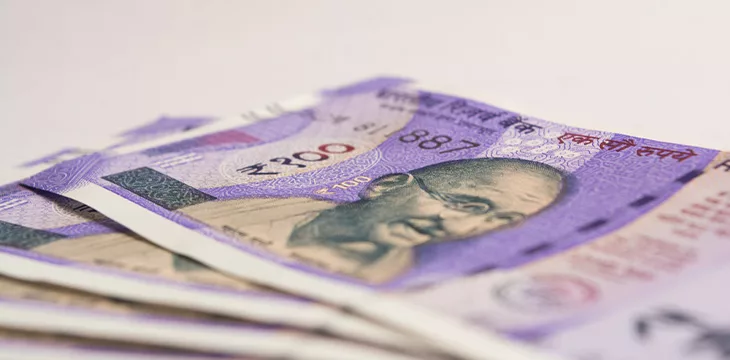|
Getting your Trinity Audio player ready...
|
India’s finance minister, Nirmala Sitharaman, remained silent on requests from the digital asset industry to lower taxation as she presented the Budget 2024-25 on February 1 in Parliament. While this budget was an ‘interim’ one, put together to manage expenses and revenues until a new government is formed after elections later this year, the Web3 industry in India is hopeful the new government will address the industry’s concerns in its next budget expected in July.
“Considering that this was a vote-on-account budget, we weren’t expecting any big movement during the session. We are eagerly anticipating changes to be announced post elections when the full budget is announced, and we are optimistic with respect to the state of the sector in the country,” said Dilip Chenoy, chairman of Bharat Web3 Association, an industry body formed to promote and grow the Web3 industry in India.
India passes a vote-on-account after an interim budget is presented to obtain Parliamentary approval for managing essential government spending, like paying salaries.
India imposes a 30% flat tax on all digital asset income from April 2022 and a 1% tax deducted at source (TDS) from July 2022 on all digital asset trades above 10,000 Indian rupees (US$120). The South Asian nation also does not allow digital asset traders to offset losses against gains. In 2023, India introduced a penalty equal to TDS for non-deduction, interest of 15% annually for late payment, and even a jail term of up to six months.
“High TDS and income tax rates continue to be hurdles which have caused both creators and consumers to move out of India. This migration has significantly affected the prospects of Web3 in India. We have and will continue to highlight such concerns to key stakeholders,” Chenoy told CoinGeek.
India is likely to witness a loss of about $1.2 trillion in trade volume on domestic exchanges over the coming years, a study from Esya Centre, an Indian policy think tank, claimed. The study also pointed out that due to the imposition of harsh tax measures, as much as $3.85 billion had moved to overseas digital asset trading exchanges as traders looked to evade punishing taxes in India.
As a result, the Web 3.0 industry has requested the government to establish a “level playing field” for virtual digital assets (VDAs). The requests include a reduction of TDS from 1% to 0.01%, allowing offsetting and carrying forward losses, as well as treating income from VDAs at par with other capital assets.
“Crypto is experiencing a resurgence this year. The markets are showing positive growth, retail activity is increasing, and there is clear regulatory progress happening worldwide,” said Ashish Singhal, co-founder and group CEO of PeepalCo.
“Due to it being an election year in India, the interim budget had limitations that prevented the necessary tax adjustments for the sector. On a positive note, the government of India now has the chance to introduce comprehensive crypto regulations and improved tax policies in the upcoming full budget, with the full support of the electorate,” Singhal said on X, formerly Twitter.
While India, the world’s largest democracy, continues to work with the Group of 20 (G20) nations to develop a common global regulatory framework for digital assets, the government has taken authoritative actions in the last few months against overseas digital asset exchanges, including sending show-cause notices to Binance and Kucoin, for not complying with India’s anti-money laundering norms.
Last December, India’s Financial Intelligence Unit (FIU) issued ‘compliance show cause’ orders to nine digital asset exchanges—Binance, Bitfinex, Bitstamp, Bittrex, Gate.io,
Huobi (now HTX), Kraken, Kucoin and Russia-based MEXC Global. India’s government said these exchanges were “operating illegally without complying with the provisions of the Prevention of Money Laundering (PML) Act.”
Following the cue, Apple (NASDAQ: AAPL) pulled Binance, Kraken, and other foreign exchange apps from its App Store, while Google (NASDAQ: GOOGL) delisted the trading platforms from its Play Store in India.
Digital assets a ‘force multiplier’ for India’s developed nation vision
“The next five years will be years of unprecedented development and golden moments to realize the dream of a developed India by 2047,” Finance Minister Nirmala Sitharaman said in her budget speech.
Prime Minister Narendra Modi’s Bharatiya Janata Party is in a strong position to hold office once again after national elections later this year, bolstered by a robust economy. The world’s most populous nation is projected to grow at about 7% in the current fiscal year, re-confirming India as one of the fastest-growing major economies in the world. This is especially commendable at a time when global growth is expected to be at 2.9% in 2024, slower than three percent in 2023 and 3.5% in 2022.
“We believe crypto and VDAs can be a force multiplier in achieving Viksit Bharat [making India a developed nation by 2047] by empowering individuals at the grassroots level. Digital public infrastructure and the Prime Minister’s aspiration for ‘Anusandhan’ [science-driven growth] will benefit from integrating provisions for long-term financing of domestic crypto projects given how India is at a pivotal phase in the crypto revolution,” Rajagopal Menon, vice president of WazirX, one of India’s largest virtual digital asset trading platforms, told CoinGeek in an emailed statement.
“We expect these developments to factor in the government’s agenda along with our existing requests for a reduction in TDS rates to 0.01% and offset of losses for traders,” Menon added.
According to Sumit Gupta, co-founder of CoinDCX, India’s first digital currency unicorn, the VDA industry, rooted in digitization, innovation, and research, plays a pivotal role in facilitating decentralized storage, fractional ownership, metaverse development, interoperability, scalability, and sustainability.
“While the VDA industry had hoped for tax and TDS relief, we remain optimistic that the full budget will bring positive developments, including reduced taxation and a supportive policy framework. It is believed that the crypto industry, a key component of the VDA ecosystem, holds substantial potential to contribute significantly towards realizing India’s developmental aspirations by 2047,” Gupta said.
‘Golden era for tech-savvy youth’
“For our tech-savvy youth, this will be a golden era,” Sitharaman said in her budget speech. “A corpus of rupees one lakh crore (one trillion rupees) will be established with 50-year interest free loan. The corpus will provide long-term financing or refinancing with long tenors and low or nil interest rates,” she said.
This announcement will be pivotal in facilitating more research and development on innovative technologies and will fuel the growth of more Web3 professionals in the country, thereby redefining India’s growth trajectory on the global stage, pointed out Nischal Shetty, co-founder of Shardeum, an EVM-based, linearly scalable smart contract platform. He added that harnessing the youth’s energy and embracing technological advancements will pave the way for a future where creativity, entrepreneurship, and digital prowess converge to shape a thriving and resilient nation.
According to Avinash Shekhar, co-founder and CEO of Pi42, a digital currency derivatives platform, the proposal to support India’s youth with rupees 1 Lakh crore corpus with 50-year interest-free loan is “historic”.
“This is set to catalyze a surge in research and innovation, particularly in the dynamic realms of crypto, blockchain and the Web3 technologies. The country has over 19 million crypto investors, of which 75% are the youth, thus depicting a significant interest among young users and fuelling their potential,” Shekhar told CoinGeek in an emailed statement.
“With long-term financing options, this initiative is a resounding call to this cohort to scale up their endeavors and take a momentum leap in shaping the future through the limitless possibilities of decentralized technologies,” he said.
Watch: Enterprise Utility Blockchain Summit highlights—India is scaling big for a better Internet

 12-15-2025
12-15-2025 





